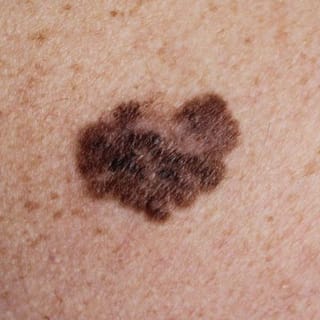
Melanoma. No one wants to hear that word at their doctors appointment but if you or a loved one have it you are not alone. Depending on what stage of Melanoma you have there are treatment options available and they have vastly improved. Forming on both sun exposed and sun protected skin, it can be a bit tricky to detect. If you believe you are at risk for this form of skin cancer yearly visits to your dermatologist is a must.
What Are the Causes of Melanoma?
Ultraviolet rays are believed to be the biggest cause of Melanoma. Although, your environment and genetics play a significant role in the cause of this form of skin cancer too.
What Are Some Warning signs?
Melanoma is typically asymmetrical and has uneven borders. Multi colored spots are usually a sign as normal moles or brown spots are solid in color. This form of skin cancer is ever evolving in size, color and elevation it may also bleed, itch or become crusty so be sure to check for changes in spots on your body.
What To Look For
The Mayo Clinic lists a simple way to help you identify characteristics of unusual moles that may indicate melanoma, think of the letters ABCDE:
- A is for asymmetrical shape. Look for moles with irregular shapes, such as two very different-looking halves.
- B is for irregular border. Look for moles with irregular, notched or scalloped borders — characteristics of melanomas.
- C is for changes in color. Look for growths that have many colors or an uneven distribution of color.
- D is for diameter. Look for new growth in a mole larger than 1/4 inch (about 6 millimeters).
- E is for evolving. Look for changes over time, such as a mole that grows in size or that changes color or shape. Moles may also evolve to develop new signs and symptoms, such as new itchiness or bleeding.
Cancerous (malignant) moles vary greatly in appearance. Some may show all of the changes listed above, while others may have only one or two unusual characteristics.
Treatment for Melanoma
From aggressive options like chemotherapy or radiation to surgical removal, immunotherapy and targeted therapy, there are many treatment options and the team at Bay Dermatology is here to help you through this challenging time.
The Experts at Bay Dermatology
Contact the experts at Bay Dermatology today.
